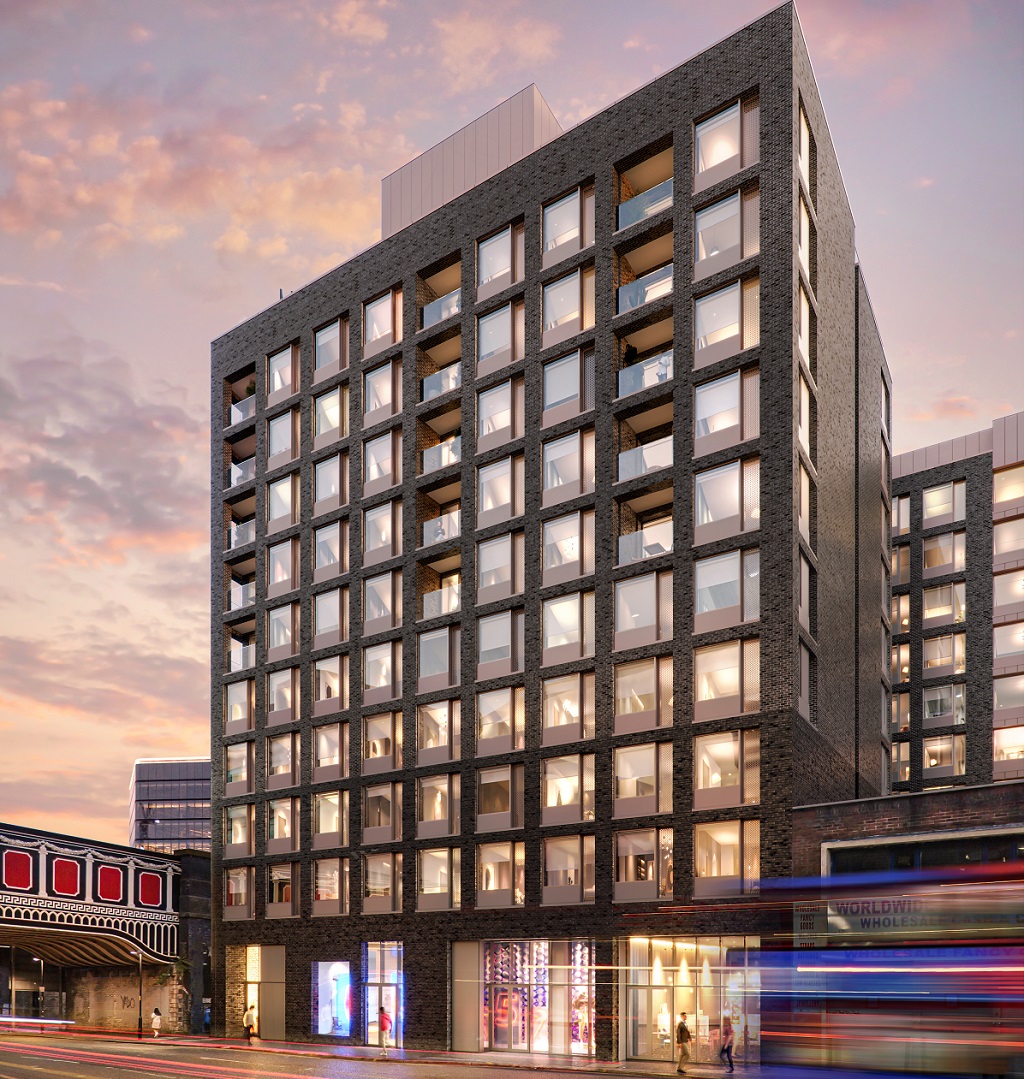The Subplot
The Subplot | Inside the dark art of office market predictions
Welcome to The Subplot, your regular slice of commentary on the business and property market from across the North of England and North Wales.
THIS WEEK
- Office voodoo: why some developers and investors are getting worried about the way planners do their office market sums
- Elevator pitch: your weekly rundown of what is going up, and what is heading the other way
OFFICE VOODOO
Why numbers and nerds are going to make all the difference
Some fancy calculations are about to up-end the usually touchy-feely Northern office market.
Four of the North’s biggest office markets are about to be re-thought. City councils in Leeds, Manchester, Newcastle, and Sheffield are at work on a new generation of long-range planning documents that will determine how much gets built, and where. Along with the plan comes the supporting evidence – a raft of data and analysis – which is supposed to make these plans serious, reliable guiderails for economic growth.
Seeing the future
So what’s the problem? In short, it’s how you make sensible, potentially useful (eg non-silly) predictions for the amount of new office space your city will need in five, 10, or 15 years’ time. This is tricky because the office market is not what it was: Covid, talent shortages, green impulses, and build costs have changed the mood.
So every city faces the same methodological problems which look nerdy – and are a bit – but matter enormously. The danger is that it’s all vibes and feels, not solid analysis, that direct what happens next. Are developers and agents right to be anxious? Are we looking at solid research or a load of crystal balls?
For example
For a worked-out example of what’s causing the office market concern, take a look at Greater Manchester where the city region’s omnibus plan – Places for Everyone – is approaching the final hurdles after nine years of effort. Inspectors announced on 22 January that they’d finished their inquiry: a report and ministerial decision comes next.
What does it say about offices? After changing the time period of the Places for Everyone plan, and excluding Stockport, Policy JP-J3 reads: “At least 21.7m sq ft of accessible new office floorspace will be provided in the Plan area over the period 2022/2039.”
To discover how they got to this number you need a 2021 analysis of trends, and a late 2022 worked-out example of how each of the nine boroughs (including Manchester) got their numbers. Subplot promises you this is simple and surprising. You will be glad you read the next couple of paragraphs.
Use with caution
The Places for Everyone number was based on analysis from 2020 of changes in employment, which said more people would work in offices, which itself was based on the Greater Manchester Forecasting Model produced in October 2019. This concluded that employment growth required 14%-17% more floorspace. We might wonder if that’s still right, but for now, let’s stick with it.
More troubling is that this kind of forecasting (Accelerated Growth Scenario employment forecasts – not widely used) isn’t without problems, and the more your economy changes the more difficult it gets because the assumptions keep changing. So the 2021 document reports “a note of caution” leading to “greater uncertainty around translating jobs to floorspace needs and estimating replacement demand”.
Making it local
Now comes the tricky bit, because while this approach gives you an arguable number for the increased office employment in Greater Manchester, it gives you nothing for individual boroughs, such as the city of Manchester. The 2021 evidence confesses: “It is not possible to disaggregate the forecasts to a district level without undertaking significant new modelling.”
The 2022 document shows us how the big GM-wide figure gets turned into a number for Manchester. Crucially this calculation has absolutely nothing to do with the employment growth which kicked the process off in the first place.
Simple maths
It works like this: you look at Places for Everyone and see how much space has been found for new offices in each borough’s strategic land assessment – it’s maybe-one-day canvas of potential sites. Then you work out what proportion that is of the total, and then allocate to the borough the same percentage of the new requirement. So, for instance, Manchester found maybe-one-day sites for 23.7m sq ft of new floorpsace, which is 72% of Greater Manchester’s potential, so it gets allocated 72% of the 21.7m sq ft plan “need” for new offices, which is 15.6m sq ft. Subplot approached the Greater Manchester Combined Authority for their thoughts on the evidence base, but had no reply.
Amazing but true
In other words, Manchester’s 15.6m sq ft allocation has nothing to do with the potential growth in office jobs in Manchester; it’s only related to the list of maybe-one-day-perhaps deliverable sites. Some of those sites – like millions of sq ft around the airport – are seriously questionable. Nobody knows whether 15.6m sq ft is enough (or too much) to meet employment growth, even if we were certain that dated employment growth figures were still reliable. And this disconnect with the economy is why some observers find the office development targets unbelievable and incoherent.
Not happy
“When we ask officials about the property research and analysis for these plans, we get blank looks, and reading into the background you realise there’s none,” one senior figure tells Subplot. “Who is doing the real estate analysis, because at this rate there won’t be an office development pipeline. The funders won’t touch it, it won’t be viable.”
There’s some anger and bafflement, particularly since the focus (thus far) seems to be on new-build, and not so much on refurbishment which is where they think the real opportunity lies. Senior city council figures tell Subplot it’s not either/or, but both.
Have another go
Are new ways of looking at the city office market likely to make a better job of getting the numbers right? A lot of energy and political enthusiasm are going into developing a new economic strategy for Manchester. This is in part influenced by a study by the Resolution Foundation, Economy 2030: A Tale of Two Cities, which looks at how to improve productivity. The gist is that Manchester city centre needs to be a lot bigger. Today it is home to only 13% of the city region’s workforce, compared to the 34% of Greater London’s that work in Central London, and should look to London for a target. That means about 180,000 new highly skilled graduate office jobs, which means finding office space to put them in.
Awaiting their report
Respected Manchester agency OBI has been asked to look into how the office market might work and the balance between new-build and refurbishment. A report lands (or has landed) on city council desks about now. Its contents are the subject of much speculation in the office market. Some feel cut out of the process. Subplot approached OBI for a word but hasn’t yet had one.
It’s provoking
Should council leaders take those Resolution Foundation numbers seriously, as a guide to policy? The Foundation told Subplot its projections were robust. Anthony Breach is an associate director at the Centre for Cities, a think-tank also involved in the Economy 2030 project. He says it would be a mistake to take it too literally (and reckons Manchester leaders are wise enough not to do this).
Think, people
“This was less of a business case, more of a thought experiment, saying if Greater Manchester needs 180,000 new graduate jobs to grow, how would the city centre accommodate them?” Breach says.
“It’s to get politicians to think about the degree of change the big regional cities need, but it’s not evidence for building on the ground. It’s to encourage leaders to grapple with the trade-offs – office towers versus residential towers, city centre versus suburbs.”
Okay, it’s complicated and a bit techy, but this stuff matters. Bismarck famously advised against watching how laws are made – nobody wants to see what’s in a sausage, he joked – and maybe the same applies to office market planning targets. But there are signs of disquiet from the market as planners and politicians in Manchester, Leeds, Newcastle, and Sheffield re-think their city centres. For now, it’s an early warning, something to keep your eye on, a straw in the wind.
 ELEVATOR PITCH
ELEVATOR PITCH
Going up, going down. This week’s movers
Newcastle’s office market enjoys a long-delayed shake-up, while the build-to-rent market is on the cusp of morphing into something less about flats and more about houses. Doors closing.
 Build-to-rent on the cusp
Build-to-rent on the cusp
This week Carlyle Global Credit, a £118bn outcrop of the £260bn New York-based investment house, teamed up with Round Hill Capital to pump another £115m into a 488-unit build-to-rent scheme in Manchester. The project is at Portugal Street East, in the soon-to-be-fashionable growth district roughly south-east of Piccadilly Station. It is described in publicity as “luxury.” Market wisdom has been that luxury is a bit 2017, and best avoided, but obviously Carlyle thinks otherwise. It liked the lot size (big enough to get global investors’ attention), the partners involved, and Manchester’s 13% year-on-year rental growth.
More money is coming. A poll of investors carried out by Cushman & Wakefield suggests £8.1bn is assigned to BTR in 2024, though how much of that gets spent and on what is a deeply moot point. That’s because 2023 was – unusually – a stand-still year, which saw the volume of investment hold steady at a shade over £4bn, but only thanks to a £1.4bn surge in investment in single-family rental (houses) rather than BTR flats.
So is the BTR city-living boom on the wane? In Leeds, Deloitte’s sums show there’s waxing, not waning: compare 5,274 units delivered in the five years 2018-2023, with 2,123 due to be delivered in 2024. That’s a lot of flats all at once.
Manchester is more plugged into Big Money so things are changing faster. Last year, Deloitte said the city clocked up 2,402 new units – so similar to Leeds, but in a much bigger market – and way down on the 2021 peak of 5,549 homes completed. The city pipeline is bulging – 11,765 units under construction. Investors aren’t worried they’ll end up sitting on losses but the BTR market is on the cusp. There’s no doubt that by the time they’re built-out the queue of investors for BTR flats will probably be shorter, and that for SFR houses rather longer.
 Northern lights
Northern lights
It’s been a funny old office market since 2020, but even optimists would find year-on-year rental growth of 14% a bit ritzy. So well done Newcastle, where BNP Paribas Real Estate research suggests prime rents were up 14.3% (to £32/sq ft) by the end of 2023. The firm says this compares with an average growth of 7.2% across the big regional cities including Manchester, Leeds, Liverpool, and Sheffield.
There’s a slight optical illusion here, because “prime” rents are, self-evidently, not normal rents. Also bear in mind that Newcastle rents started cheap – or, in the language of the property world, grow “off the back of a relatively low base.”
Even so, the Newcastle market is doing better than okay. Newcastle city centre take-up in 2023 totalled 207,100 sq ft across 39 deals compared to 224,300 sq ft across 45 deals in 2022. A modest fall, but generally larger deals, and still decently ahead of the five-year average of 185,000 sq ft. But the key figure is that deals to rent Grade A space accounted for 71% of all transactions, which is seriously good.
Also note that while the city centre market was down a shade, the out-of-town market was down a lot. Elsewhere, office take-up for Tyne and Wear totalled 383,200 sq ft in 2023 compared with 465,400 sq ft in 2022 and 581,300 sq ft in 2021. That’s 34% down in just three years.
The crash in the out-of-town market (where not a lot of new stuff gets built or refurbished) and the surge in Grade A take-up in the city centre (where some does) suggests a big change. Newcastle is now experiencing the kind of geographic restructuring that bigger regional cities had 10 years ago.
Get in touch with David Thame: david.thame@placenorth.co.uk




